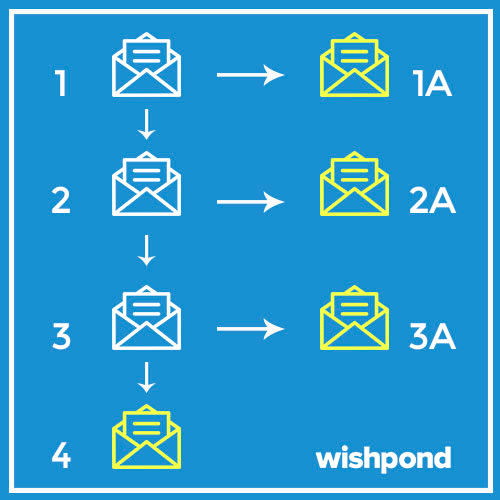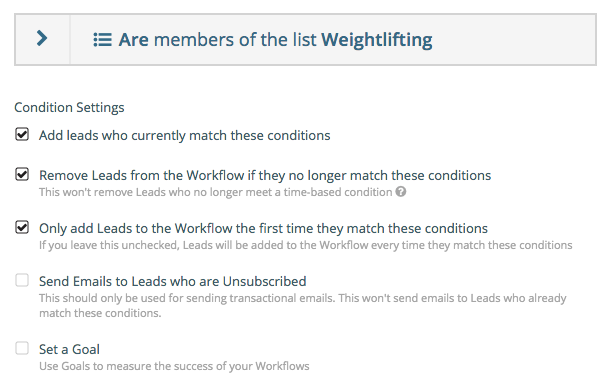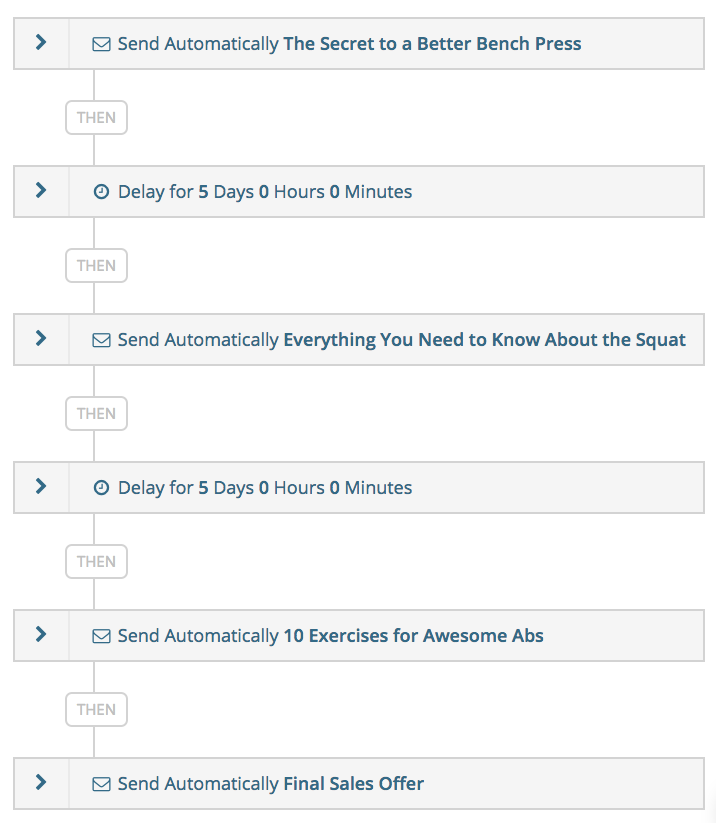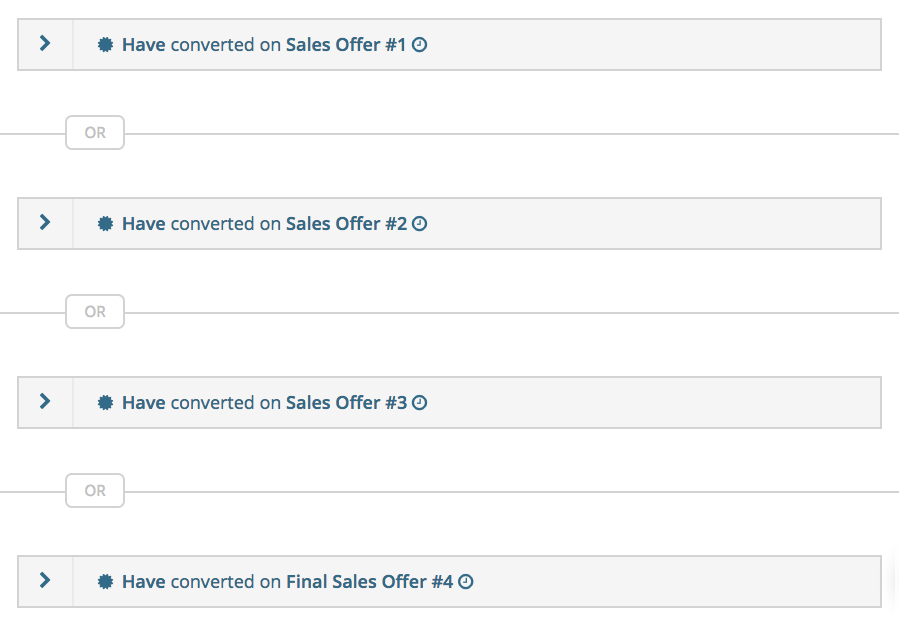[content-section top=”100″ bottom=”160″ classes=”main-content home-page”]
The Complete Guide to Email Drip Campaigns for Fitness Centers
By now, you’ve become a master of marketing your fitness center – you’re a traffic-driving, lead generating, segmenting machine.
So now you’re sitting there with dozens (or hundreds, or thousands) of highly-qualified, organized, and engaged leads who you want to turn into members. Great!
So, uh, how do you do it?
By far the best way to nurture these leads and get them to join your fitness center is through the use of email drip campaigns.
What is an email drip campaign?
Let me guess – you’re now wondering what email drip campaigns are.
Wonder no more! Email drip campaigns are a form of email marketing; essentially, it’s an automated series of emails that’s built to garner a conversion from your leads – in your case, that probably means getting a member for your fitness center.
What makes them so awesome is that they’re totally automated. As soon as a lead converts on a landing page, or signs up for a free trial, or completes any kind of action, a workflow can be automatically triggered to nurture them with communications that are relevant to the campaigns they’ve interacted with.
They’re also great because they’re precisely timed – emails can be sent out immediately, or after a specific amount of time that you control. This way, they can be optimized to reach customers at the perfect time, when they’re most ready to convert.
At its simplest, an email drip campaign might consist of a set of three or four emails that you automatically send to your leads over a few days or weeks.
But that’s easy – anyone with basic knowledge of marketing automation can set up a drip like that. We want a method that’s optimized for conversion so we can get as many members as possible.
Luckily, marketing automation is a powerful tool that allows us to run email drip campaigns based on customer interests and activities. This ensures each email is relevant and that customers are presented with an offer right when they’re ready to convert.
In this article, I’ll show you how – let’s jump right into it.
The Framework of Email Drip Campaigns
The foundation of a successful email drip campaign is content, as it’s what we’ll use to draw in leads to capture and maintain their interest. Because all of your leads are segmented (you did segment them, right?), you should have at least some idea of what they’re interested in.
This presents an opportunity for you to create targeted and relevant content to get these users engaged with your business. Content includes things like articles (“10 Exercises for Awesome Abs”), videos (“How to Stretch Before You Bench Press”), and other things like e-books.
In a simple drip, you might send customers a series of content to get them to interact with your business by reading or sharing your content – eventually, you’d send an email reaching out to them with a sales offer, like “join today”.
Generally, you’d structure your drip campaign like a funnel – the first email might be general (“How to live a healthy life”), the second would be a little more targeted (“Why weightlifting is great for a healthy lifestyle”), the third would be even more specific (“Here’s 10 things you need to do at the gym”), and so on, until the sales offer.
Your sales offer would be something low-commitment, like a 1-month membership or a 10-class pass; it would link to a landing page (or pricing page) that you’ve created for this purpose.
This type of drip campaign looks something like this…

That’s not a bad way to go about your lead nurturing efforts, but it’s not quite as targeted as it could be.
What we should do, instead, is tailor our sales efforts in response to the behaviors and interests of our leads. That’s our simple secret to email drip campaign success. Let me explain…
Behavior-based email drip campaigns
Marketing automation allows us to do some pretty incredible things in combination with email. We’re going to build on the structure I previously discussed to put together a drip campaign that helps you strike while the iron is hot.
Instead of simply sending a series of three or four content-based emails ending with a sales offer, we’re going to attach sales offers to each of these content emails that trigger based on your leads’ interest in the content.
Here’s what it looks like, visualized:

As you can see, this workflow has 7 emails instead of 4 (though this can be scaled depending on how many content emails you’d like to send). It’s still built around that standard drip, but it has a few fancy new tricks.
Basically, we still send content emails, but we trigger a sales email to send if a lead clicks through on the content email. We’re making the assumption that a lead is interested in our fitness center based on their interest in the content from our emails. Our offer is related to the piece of content we’ve sent them, which makes it feel more targeted and relevant than a simple drip.
Remember that your leads are segmented, too – this means you’ll already have an idea of what kind of content resonates best with them.
If that seems a little confusing, don’t worry – let’s look at an example based around someone who converted on a weightlifting-related landing page. Our goal with this campaign is to get the lead to join our gym, using a free personal training session to get them into the gym. Keep that diagram above handy; it’ll help you understand the structure of these emails.
First, we’ll send email 1A:
Email 1A
- Content (blog post)
- Blog post: The Secret to a Better Bench Press
If the lead clicks opens and clicks through to your content, we send them Email 1B, which contains an offer email linking to a landing page designed around the content from Email 1A:
Email 1B
- Offer: free personal training session
- Landing page headline: Boost Your Numbers and Improve Your Form with a Free Training Session
If the lead doesn’t click through Email 1A or convert on 1B, we send them Email 2A after a few days, a second content-based email with a different premise:
Email 2A
- Content (e-book)
- E-book title: Everything You Need to Know About the Squat
Again, we send them an offer-based email (Email 2B) if they click through 2A. Again, the landing page is related to the piece of content the lead clicked through.
Email 2B
- Offer: free personal training session
- Landing page headline: Never Skip Leg Day Again: Get Tips from your Free Personal Training Session!
Just as with the previous “round” of emails, we send Email 3A if the viewer doesn’t open 2A or convert on 2B within 5 days.
Email 3A
- Content (video)
- Video: 10 Exercises for Awesome Abs
Same deal here; a content-related offer.
Email 3B
- Offer: free personal training session
- Landing page headline: Get Shredded for Summer with a Free Personal Training Session
Finally, if they haven’t converted by now, we send them one final offer with a more general premise.
Email 4
- Final offer: free personal training session
- Landing page headline: We’ll Help You Reach Your Goals – Get Your Free Personal Training Session!
That should make more sense. Now I’ll show you how to set this campaign up in Wishpond!
Using Wishpond to Set Up Your Drip Campaign
To set up our campaign, we’ll need a minimum of four workflows: one for our “base workflow”, and one each from our offer-based emails.
Here’s how you do it.
Before you begin setting up your automation workflows, make sure you have a list for leads you want to market to with this drip campaign.
We’ll create our base workflow first. Set the conditions of your first workflow to include leads from the list you want to target, and set your condition settings as follows:

As you can see below, I’ve spaced out each content email with a 5-day delay in each, with the final sales email at the end of the workflow. Basically, this first workflow runs until a lead has converted on a sales email – then they’re removed from it (as per our condition settings).

Now that this workflow is ready, let’s set up our sales email workflows.
All three are the same, so I’ll just show you how to set up the first one.
We’ll create a condition that targets leads who have clicked through our first content-based email. Actions will be a slight delay (we don’t want to seem too eager), and then we’ll send them our corresponding sales offer email.
Here’s the condition:

And the actions:

Create additional workflows for each of your sales offer emails (one for each of them). We also need one final workflow to remove people from your list once they’ve converted on a sales offer.
Here’s the conditions:

And action:

There we go – launch these workflows and you’re good to go! You’ve successfully created your first behavior-based drip campaign.
Conclusion
There you go – a step-by-step guide to putting together a drip campaign based on user activity that’s optimized for conversions. Sharing related content with interest-targeted sales offers is an awesome way to drive conversions and get more members for your fitness center.
[/content-section]
[contentblock id=”backtoindex-fitness”]